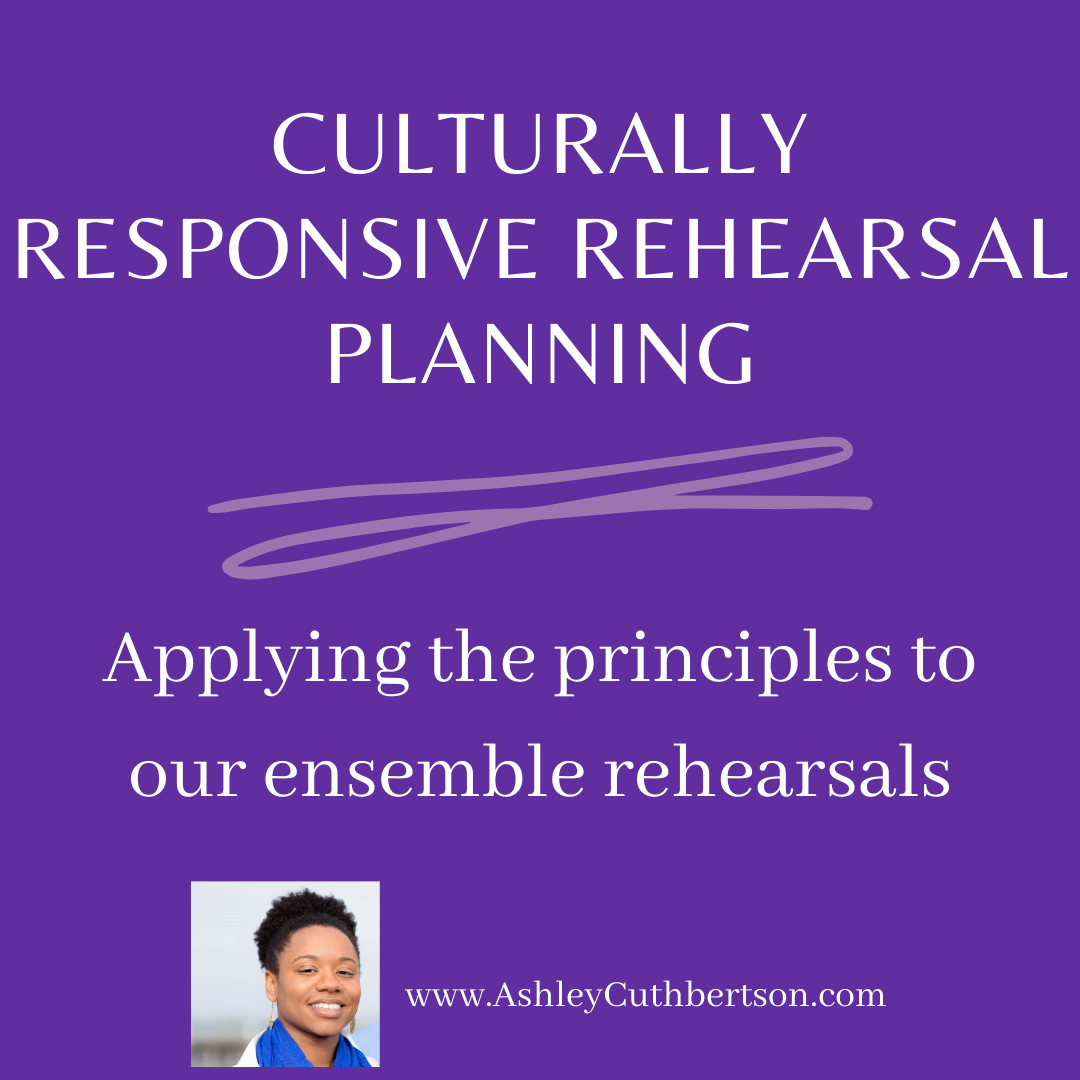Listen to this blog post by clicking the player below!
In my last blog post, I shared several programming structures that you can use to center student voice and choice in your ensemble classrooms (click here to check out that post!). But what could a rehearsal look like that intentionally centers culturally responsive practices?
Remember, culturally responsive education is not multiculturalism, and it is not simply just diversifying your repertoire. Rather, culturally responsive education focuses on:
- Instruction that is relevant to students
- Developing critical perspectives of the world
- Effective information processing, and
- Cultivating a supportive learning environment for students.
Specifically, when we look at Culturally Responsive Music Education, I define it as “a robust approach to teaching music that utilizes students’ cultural frames of reference as assets in order to make music learning more relevant to them, while employing music as a vehicle for students to advance their understandings of self, others, and the world as they develop independent musicianship.”
When developing rehearsal plans that intentionally center culturally responsive practices, it’s important to keep the brain in mind by:
- Activating & engaging the mind
- Breaking learning into smaller chunks
- Give processing time
- Allow time for practice
- Making space for student voice and choice
Activate and Engage the Mind
Your beginning of rehearsal warm ups are the perfect time to ensure that your musicians are cognitively engaged. This is the “hook” needed so that they are ready to receive information because without engagement, students will not be able to adequately learn.
In addition to your typical instrumental or vocal warm ups, also consider how you can include a community building activity, or discussion around something that is related to the music you will rehearse that day. Including some intentional activities along side your warm ups is a simple way to “hook” students and prime their brains for learning, as well as build community, and learn more about your students.
Break Learning into Smaller Chunks
As music teachers, I think we already do such a great job of tackling small parts of music one at a time!
By breaking learning into smaller chunks, it allows our students to really develop their skills and understandings at a level that “sticks” from class to class. When engaging in score study with a new piece, consider what small chunks you can extract from the music to focus your students’ attention to and also consider how you can spread the small chunks out over time until students have mastered the piece.
Give processing time
With each new section, or chunk, of a piece be sure that you are allowing students time to thoroughly process it before moving on. This could look like, giving them time to practice with a stand partner or their section, or playing a musical game with the passage to ensure they’ve really got it.
Allowing students time to thoroughly process before moving on actually ensures that the learning moves from their short term to long term memory, which means that when they return to it in your next whole group rehearsal you won’t need to go back and continue to clean things up.
Allow time for independent practice
While this may seem counterproductive during a whole group rehearsal, giving students time to practice on their own for even just a few minutes during rehearsals supports their ability to decide for themselves how to pace their learning.
Perhaps they need to go a bit slower (or faster!), or they need to look up a particular fingering, either way, having some independent time allows them to practice making good practice choices on their own which in turn supports their development of independent musicianship.
Making space for student voice and choice
One of the best ways to get students cognitively engaged and invested in the learning is by stepping aside and making space for their voice and choice!
Consider letting them decide on the warm ups (or even better, have them lead the warm ups!), which passages from the music they feel need to most attention to be worked on, or which pieces they just want to run through for fun. Sharing the decision-making process during the rehearsal is a powerful way to not only ensure engagement, but also helps students to think carefully about their work and where they feel time is best spent which is another way to support their independence!
How do you ensure responsive rehearsal plans in your ensemble classroom?
I would love to hear how you’re making your rehearsal plans responsive in your ensemble classroom! Share below or share on social media and tag me: I’m @ACuthbertson10 on Twitter, Instagram, and Facebook.
Also, let me know what you think of this post! If you haven’t already, be sure to sign up for my weekly email newsletter where I’ll be sending these blog posts each week, as well as other music ed resources and tips.
Until next time,
Ashley
Did you like this post? Share it with a friend by using the buttons below!
Keep up to date by signing up for my weekly email newsletter!
